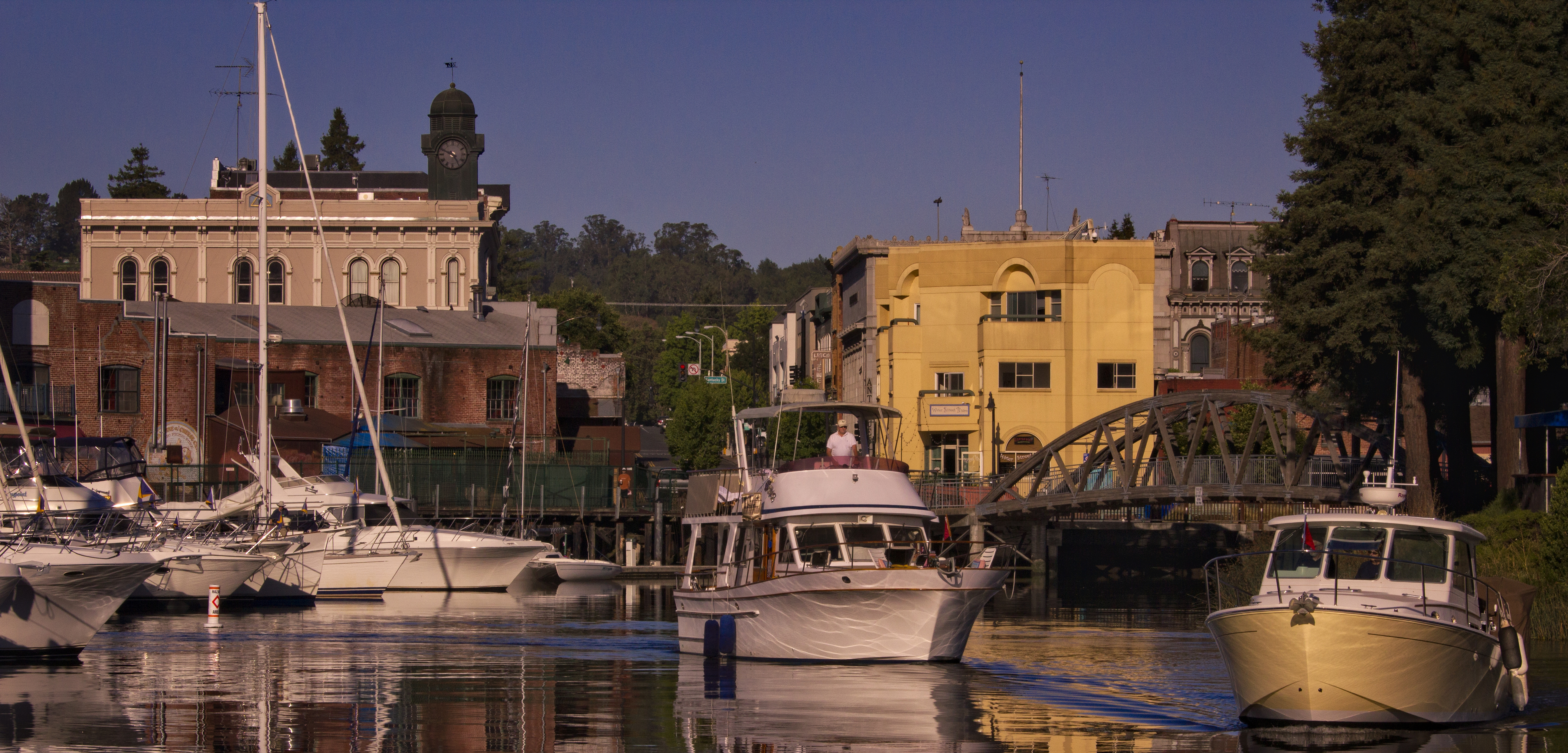
Our Historical Ties to Petaluma
Standing proudly as the cornerstone of Petaluma’s rich downtown culture for over one-hundred thirty years, our beautiful Lodge continues to be a force for good in the community through the actions of our members. We strive to live up to the example set by those who have come before, many of whom guided and shaped Petaluma and Sonoma County in their founding years. Let us explore that vibrant history, and particularly the erection of our wonderful and world-renowned building and the Lodge contained therein.
In 1850 the Petaluma valley saw its first residents – hunters who shipped their game downriver to feed the rapidly-growing population of San Francisco. As the region’s population expanded, a goodly number of the newcomers were Masons who sought the fraternal relationship of their brothers back home. In only five short years after these first permanent settlers arrived, the Grand Lodge of California granted a charter to the twenty-five original members who formed Petaluma Lodge #77, Free and Accepted Masons. Three short years later saw the institution of Petaluma Chapter Number 22, Royal Arch Masons, and also the official incorporation of Petaluma as a city.
As the flames of war grew along the Mason Dixon line, it inflamed passions across the country, even reaching into the heart of the young Masonic Lodge. That harmony might truly prevail and the brothers not suffer because of differing opinions, the Lodge split in two and Arcturus Lodge number 180 received its official charter in 1866. Curiously, the two Lodges existed together with an unexpected harmony – our early brethren were indeed striving to live by those enduring principles of Masonic brotherhood, in spite of their political feelings. History shows that there was no ill-will between the Lodges or its members. After the war, the two Lodges merged and harmony continued, unabated by time or political opinion.
Masons held their early meetings in a hall on Main Street (now Petaluma Boulevard), and later leased a room off of Washington, but soon a desire for a more permanent home grew. The founding of the Masonic Hall Association and decision to build a lasting testament to the peace and good harmony Freemasonry teaches was eagerly reported by the area’s two weekly newspapers, the Argus and the Courier, especially after plans submitted by JS Tebbals of Oakland were accepted by the board.
These were bold and exciting times, and Petaluma residents watched early the erection of the new Lodge, started in 1881. That same year the city’s population swelled to over 3,300, and the Petaluma River was filled with schooners and steamers headed downriver, laden with goods. A local man had unearthed a mastodon thighbone from his farm, and even a lion was spotted within the city limits. Special trains were often run for outings between Petaluma and Santa Rosa, and many visitors came to watch the spectacular work being done on the new Lodge. What’s more, rousing public support encouraged the town to approve a clocktower to be placed atop the new building, and to this day one of Petaluma’s most noteworthy landmarks stands proudly on top of the Masonic Hall.
As is traditional for a Masonic cornerstone-laying ceremony, important and popular signs of the times were placed within the hollowed first laid block. The Lodge maintains a list of these objects, represented below. In this way, a pieces of Petaluma’s rich history will live on forever, inside our wonderful building.
“This cornerstone of a Masonic Temple, erected by the Masonic Hall Association of Petaluma, was laid by the Grand Lodge of F & A M of the State of California, on September 9, 1881, A. L. 5881, S. C. Denson, Grand Master, represented by T.H. Caswell.”
- Copy of by-laws of Santa Rosa Commandry and Chapter
- Handbook of the Chapter by T. H. Caswell
- Copy of act of incorporation of Masonic Hall Association and list of officers and directors
- Petaluma newspapers: Argus, Courier, High School Enterprise, Women’s Christian Temperance Union, Scudder’s Land Journal
- Other newspapers: Sonoma Democrat, Daily Republican, Russian River Flag, Healdsburg Enterprise, Marin County Journal, Sonoma Index, Cloverdale Reveille, and the San Francisco Chronicle, the Alta, The Call and The Examiner.
- Proceedings of the Grand Lodge of 1880
- Constitution of Grand Lodge F.& A.M.
- Constitution of Grand Chapter R.A.M.
- Specimens of wheat from the California and Oriental Mills
- Specimen of barley from California Mills
- Various monies: American dollar, German mark, 1861 five cent piece, a copper cent, a nickel and a half dollar of 1812, a half dollar of 1836, three Japanese silver coins, three copper coins, an 1835 ten cent piece, and a 25 cent piece
- A piece of mosaic from the ruins of King Solomon’s Temple
- Alta California Almanac
- Railroad Directory
- Holy Bible
- Map of Boston
- Premium list of fifteenth annual fair of Sonoma and Marin District

